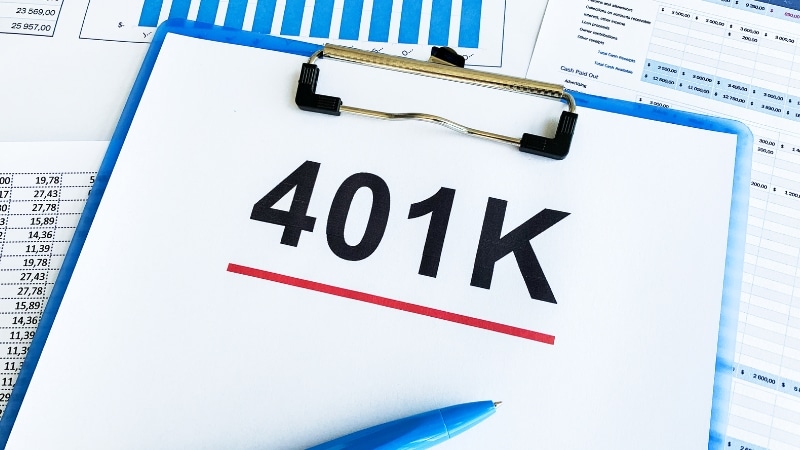401(k) retirement plans are a cornerstone of financial planning for many individuals, providing a structured way to save for the future. These employer-sponsored plans offer significant tax advantages and often include employer matching contributions, making them an attractive option for building retirement savings.
One of the key benefits of 401(k) retirement plans is the tax deferral on contributions. Money invested in a 401(k) is not subject to income tax until it is withdrawn, allowing your investments to grow tax-free over time.
Additionally, 401(k) retirement plans often come with the benefit of employer matching contributions. Many employers will match a portion of your contributions, effectively providing free money to enhance your retirement fund.
What is a 401(k) Retirement Plan?

Firstly, it is important to understand what a 401(k) retirement plan is. A 401(k) is a retirement savings plan sponsored by an employer. It allows employees to save and invest a portion of their paycheck before taxes are taken out. Taxes are paid upon withdrawal from the account, typically during retirement, which can potentially lower the tax burden since retirees often fall into a lower tax bracket.
Benefits of 401(k) Retirement Plans
1. Tax Advantages
One of the primary benefits of 401(k) retirement plans is the tax advantage they offer. Contributions to a traditional 401(k) are made with pre-tax dollars, reducing your taxable income for the year. Furthermore, the investments within the 401(k) grow tax-deferred, meaning you won’t pay taxes on the gains until you withdraw the money.
2. Employer Contributions
Additionally, many employers offer matching contributions to your 401(k) plan. This means that for every dollar you contribute, your employer will add a certain amount, up to a specific limit. Employer matching is essentially free money and can significantly boost your retirement savings over time.
3. Investment Options
Moreover, 401(k) plans often provide a range of investment options, including stocks, bonds, mutual funds, and target-date funds. This variety allows you to tailor your investment strategy to match your risk tolerance and retirement goals.
How to Maximize Your 401(k) Retirement Plan
1. Start Early
Firstly, the earlier you start contributing to your 401(k), the more time your money has to grow. Thanks to the power of compound interest, even small contributions made early in your career can grow significantly over time.
2. Contribute Enough to Get the Employer Match
Additionally, always contribute enough to your 401(k) to take full advantage of your employer’s matching contributions. Not doing so is essentially leaving free money on the table.
3. Diversify Your Investments
Furthermore, diversification is key to a robust investment strategy. Spread your investments across various asset classes to reduce risk and improve potential returns. Many 401(k) plans offer target-date funds, which automatically adjust your investment mix as you approach retirement age.
Roth vs. Traditional 401(k): Which is Right for You?
Deciding between a Roth and a traditional 401(k) can be challenging. Both have their advantages, and the best choice depends on your current tax situation and future expectations. A Roth 401(k) is funded with after-tax dollars, allowing for tax-free withdrawals in retirement, while a traditional 401(k) is funded with pre-tax dollars, offering tax-deferred growth. Understanding the differences and benefits of each can help you make an informed decision.
Strategies for Managing Your 401(k) During Market Volatility
Market volatility can be unnerving, but it’s important to stay the course with your 401(k) investments. Diversifying your portfolio, regularly rebalancing your investments, and avoiding panic selling are key strategies to manage your retirement savings during market downturns. Additionally, maintaining a long-term perspective can help you navigate through volatile periods without derailing your retirement plans.
Using a 401(k) Calculator to Plan Your Retirement Savings
Planning for a secure retirement requires careful consideration of your 401(k) contributions and growth over time. One useful tool for this purpose is a calculator net. This calculator helps you estimate how much your 401(k) savings will grow based on your current balance, contribution rate, and expected rate of return.
By inputting different scenarios, you can better understand how changes in your contributions or investment strategy might impact your retirement savings, allowing you to make informed decisions to achieve your retirement goals.
The Impact of Fees on Your 401(k) Savings
Fees can significantly impact your 401(k) savings over time. Understanding the different types of fees associated with your 401(k) plan, such as administrative fees, investment fees, and individual service fees, is crucial. Being aware of these costs and seeking lower-fee investment options can help maximize your retirement savings.
Exploring Affordable Health Insurance Plans for Retirement
Planning for retirement includes ensuring that you have adequate health coverage without breaking the bank. As you approach retirement, it’s crucial to explore various affordable health insurance plans. These plans can help you maintain financial stability while securing the healthcare services you need. Evaluating your options and understanding the benefits of different plans can lead to significant savings and peace of mind during your retirement years.
Frequently Asked Questions About 401(k) Retirement Plans
1. How Much Should I Contribute to My 401(k)?
A common recommendation is to save at least 10-15% of your salary in your 401(k). However, your specific situation, including your retirement goals and other sources of retirement income, may require adjusting this percentage.
2. When Can I Withdraw Money from My 401(k)?
You can begin withdrawing money from your 401(k) without penalty at age 59½. Withdrawals before this age may incur a 10% early withdrawal penalty, along with ordinary income tax.
3. Can I Take a Loan from My 401(k)?
Yes, many 401(k) plans allow you to take a loan from your account. However, it’s important to repay the loan on time to avoid penalties and taxes, and to consider the impact on your retirement savings.
4. What Happens to My 401(k) If I Change Jobs?
If you change jobs, you have several options for your 401(k): you can leave it with your former employer, roll it over into your new employer’s plan, roll it over into an individual retirement account (IRA), or cash it out (though this last option may result in taxes and penalties).
5. Are There Contribution Limits to a 401(k)?
Yes, the IRS sets annual contribution limits for 401(k) plans. For 2024, the limit is $19,500 for those under 50, and $26,000 for those 50 and older, including catch-up contributions.
6. How Are Roth 401(k) Plans Different?
Roth 401(k) plans are funded with after-tax dollars, meaning contributions do not reduce your taxable income. However, qualified withdrawals in retirement are tax-free, which can be beneficial if you expect to be in a higher tax bracket in retirement.
7. How Can I Monitor My 401(k) Performance?
Most 401(k) plans provide online access where you can monitor your account balance, investment performance, and make changes to your contribution amounts or investment choices. Regularly reviewing your account is important to ensure you are on track to meet your retirement goals.
Conclusion
In conclusion, 401(k) retirement plans are a powerful tool for building a secure financial future. By understanding their benefits, maximizing contributions, and making informed investment choices, you can take full advantage of what these plans offer. Start early, contribute consistently, and monitor your investments to ensure a comfortable and financially stable retirement.



